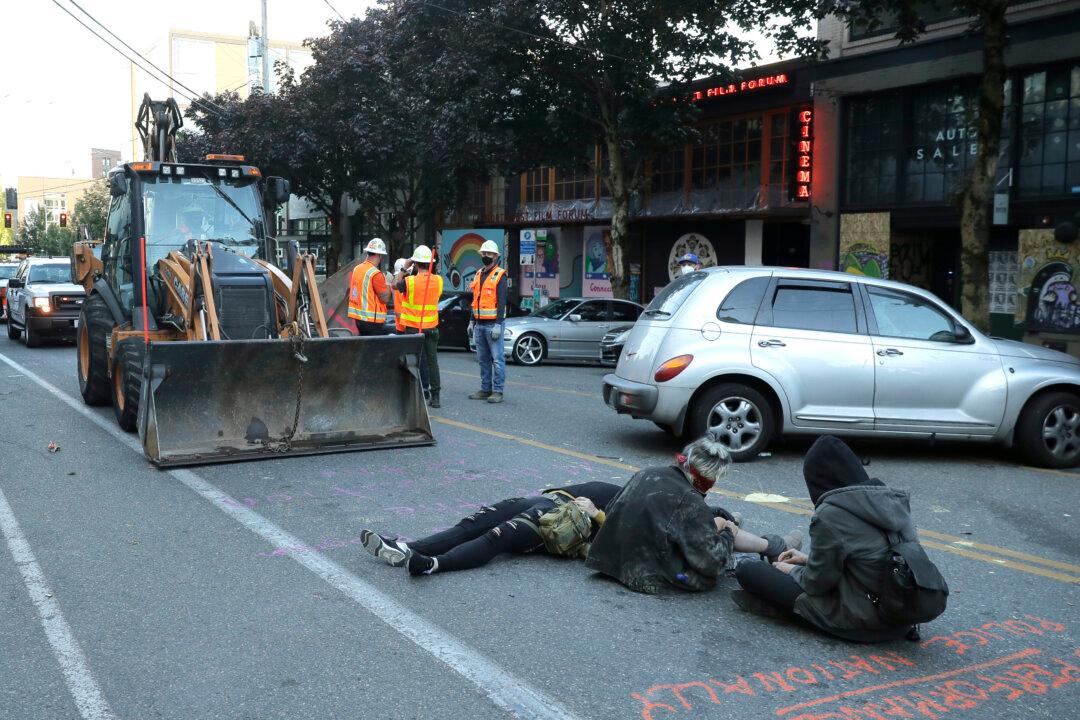People occupying the so-called autonomous zone in Seattle blocked city workers from removing barriers, leading to a meeting with Mayor Jenny Durkan.
Employees from multiple departments arrived outside the zone early June 26 “to continue the recovery of the Capitol Hill neighborhood, with the goal of removing some additional barriers blocking the roadways and cleaning up Cal Anderson Park,” a city spokesperson told The Epoch Times in an emailed statement.





